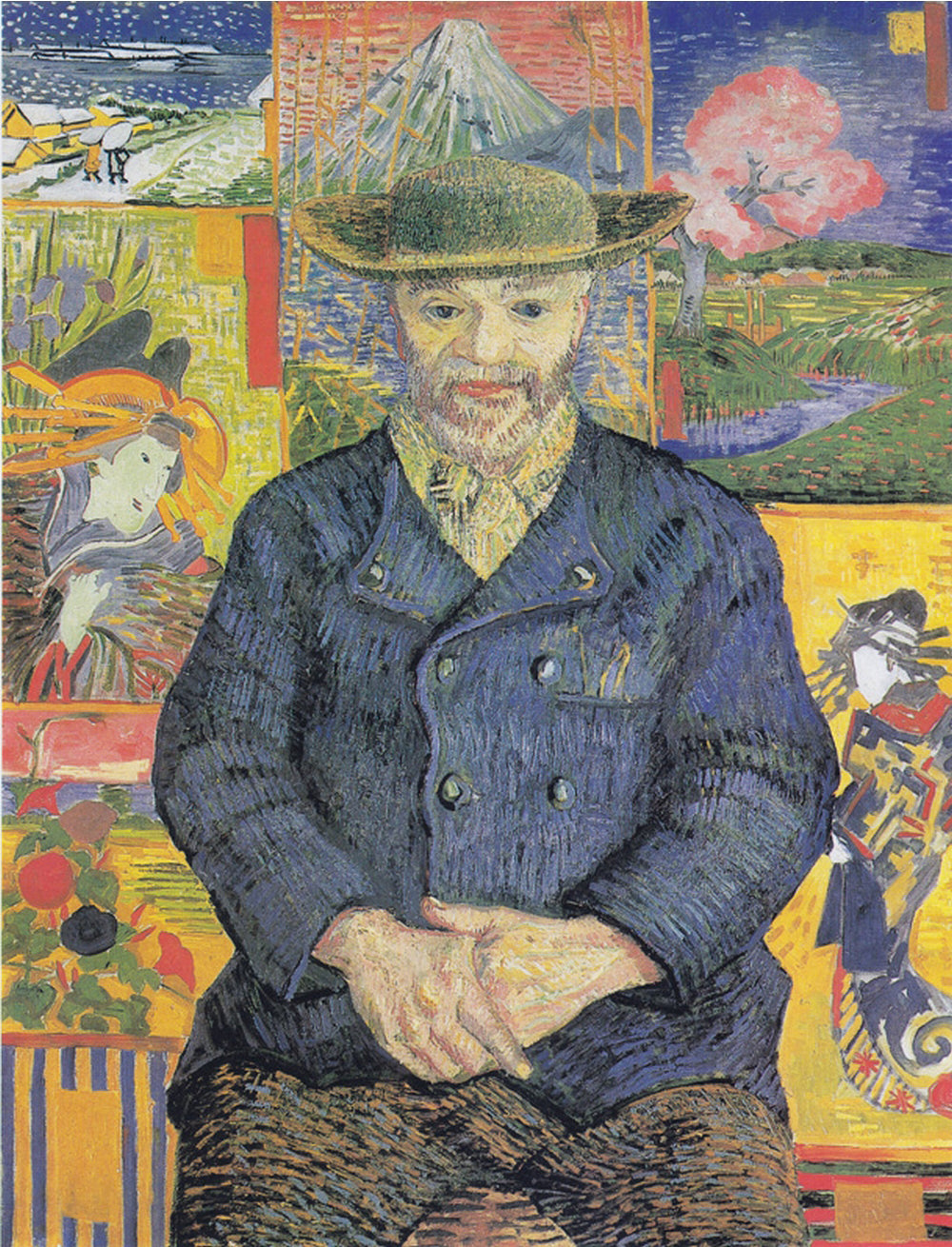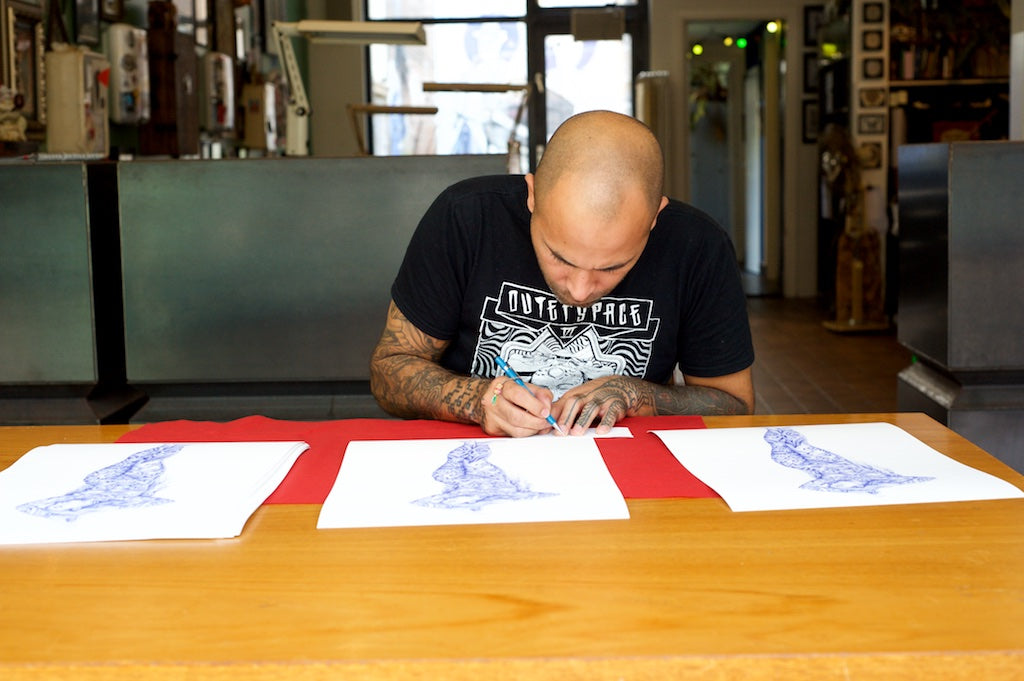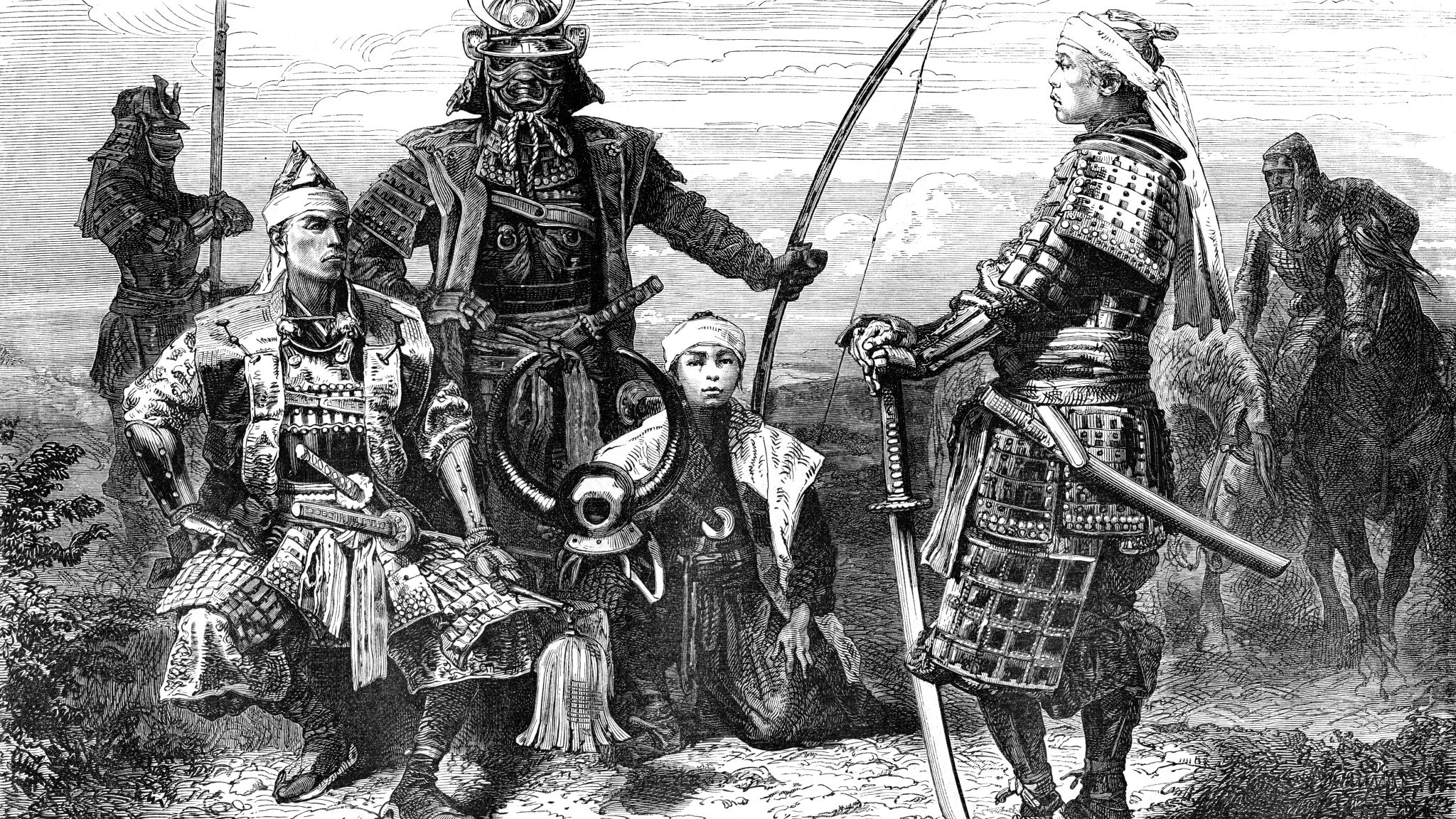The Influence Japanese prints had on Vincent van Gogh
During the middle of the 19th century, trade with Japan was limited - a monopoly the Dutch enjoyed. Back then, goods from Japan that were imported into Europe was mainly lacquer and porcelain ware.
After two-hundred years of the foreign policy of Seclusion non-Japan, the Convention of Kanagawa ended it. The effect was made possible when gunboat diplomacy was aggressively used to enforce trade relations with Eastern Asia – thanks to the American Commodore Matthew Perry. This brings the opportunity for Japan to freely trade with the West. There was more flow of goods from Japan to the international world.

An imagined bird's-eye view of Dejima's layout and structures (copied from a woodblock print by Toshimaya Bunjiemon of 1780).
By this time, some artists began to collect some cheap prints from Japan- the colored woodblock types. Among these artists are Manet, Monet, and Degas. Vincent van Gogh joined them later after adoring the Japanese woodblock prints. van Gogh and Theo, his brother, dealt in the prints for a while, leading to them collecting hundreds of it. Today, the collections are at the van Gogh Museum, in Amsterdam.
How his obsession with Japonisme started
Vincent became interested in the beauty displayed through Japanese art in 1885. Then, he was living in Antwerp, Belgium. He was new to this party, the Japonisme party. When van Gogh was in Antwerp, two set of prints, black and white, was pinned to the walls of his studio.
Apart from the fact that the prints on his studio's wall played some visual roles and influence, the painters' infatuation grew faster by various discussions of arts by Japanese in novels, magazines, and journals.
Not too long after his love for Japanese art began, Vincent started buying cheap Japanese prints. He collected hundreds of these prints during the winter, from 1886 to 1886. It was reported that van Gogh owned over six-hundred sheets. He acquired many of them from an art dealer while in Paris.
By this time, Vincent planned to make some money from these beautiful and colorful prints. He planned on selling some during spring. By 1887, Vincent had acquired more than the right prints. He organized an exhibition at 'Le Tambourin' cafe, Montmartre - run by Agostina Segatori, his lover. Those prints were sold cheap.
During this period, the influence the Japanese prints had on his works was well known. For instance, in the year 1887, van Gogh made different copies of print works from Japanese artists. He also made a cool view with plum trees. He later added a scene showing people scurrying under umbrellas - walking on a bridge in an evening downpour. The two works were a product of Utagawa Hiroshige brilliancy, a great Japanese Artist.

Sudden Shower over Shin-Ōhashi bridge and Atake is a woodblock print in the ukiyo-e genre by the Japanese artist Hiroshige.
On Vincent van Gogh’s Prints
Since Vincent started acquiring these prints, over 160 years ago, one can observe how compromising the quality of most of his prints is. This damage could be as a result of the effect light has, since they were hung on the walls of his house.
Many scholars assumed that those prints were the original bold and lively colors seen in his paintings. Truly, this suggests how much obsession and fondness the Dutch painter has for his numerous collections.
Most of the time, many dealers of the Japanese prints infuse their merchandise in tea. The process ensures to help them get market preferences color, at any given time.
If his prints were bought for, say fifteen centimes, very little when compared to what it costs back then for daily necessities – it’s uncertain if a dealer of his would go through a nightmare.
van Gogh and the East
When one reads Vincent’s letters, it is very vivid to see how Japan has a mystical effect on him. In one of his imaginary works, ‘the land of the Rising Sun”, it portrays blessed utopia and a fountainhead of health and grace. Also on Van Gogh and Japan; it is a key exhibition that attracts significant international loans – in his museum at Amsterdam. It was organized in order to find out why the faraway-Eastern country the painter hadn’t been before (or planned to) so much captured his imagination, and how it influenced his arts.
The paintings by van Gogh showed how Japanese art have an impact on him – this was visible in several exhibitions held in the past. Some of these paintings include the Neo-Impressionism and the peasant Jean-Francois Millet.
It is important to state this clearly at this point. During the nineteenth century, there were other local artists who admired goods from Japan, especially art and prints. So it’s not only van Gogh in this obsession with Japan.

The Japan stand at the London World Fair, 1862.
When Ideal was made real
It was said that while in Arles, van Gogh pinned some prints from Japan on the walls of his studio – often request more from his brother, Theo, from the collection he has in Paris. This fact alone suggests how deeper they have influence on him and his art.
His mind was all about making them a reality, he was then, often in an idealized realm – according to Nienke Bakker, a curator in Amsterdam. For Vincent, it was another exotic world, blending those vibrant prints from Japan. Most are have nice flowers, beautiful birds, and lots of women in kimonos.
According to Vincent, he considered Japanese prints as a model undiluted expression of art, not corrupted by the Western methods of description. In a letter he wrote to Theo in 1888, mention that Japanese art more primitives just like that of the Greeks and their old art – the likes of Potter, Rembrandt, Hals, Ruisdael, and Vermeer – the art from Japan don’t end.
On his personal paintings, Vincent started testing and trying out different aspects of these prints by Japanese. He made use of flat and bright colors, omitted horizons, and experimented with unusual cropping. Instead of just copying the Japanese patterns, he went further by using by adding his touch, like isolating prominent objects such as tree trunks cut off and others.
van Gogh was also instigated by nature. He painted several flowers and many remarkable occasions, and irises. He also compared some of the cool spring-time views as a Japan dream.
Inspired by the motif in Japanese art, van Gogh created several still lives with crabs. This further inspired him to produce hearty drawings with a reed pen – he believed it to be in the Japanese’s style of making prints. Through the dashed and dots, they show the optical vocabulary a Japanese master, Katsushika Hokusai – one of the two great Japanese artists acknowledged by him in one of his letters – the other artist he mentioned was called Monorou. He wrote in the letter that the Japanese draw very fast, just like a flash of lightning. The reason for this, according to Van Gogh, was because the Japanese artist has finer nerves and simpler feeling.
After the storm calm follows
In 1888, during summer, Vincent portrayed himself in a self-portrait word as a bronze. In a letter he wrote to Gauguin, he wrote ‘a simple worshipper of Buddha’ portraying himself like a Japanese monk having head shaved.
Also, in 1889, he included one of his beloved Japanese prints (crêpon) in his infamous self-portrait – with Bandaged Ear. Here, he represented geishas on the landscape on the wall, just beneath his head. He was said to find serenity in this Japanese-like art.
While Bakker refers to van Gogh’s Courtauld painting (now in Amsterdam), he said the painter was ill. Bakker said Gauguin (his friend to Vincent) has already left him, and he had to start afresh. According to him, the print is stunning, well garnished with nature and women – it symbolizes his long-term affection for Japanese arts – that the South is a paradise of a painter.

Portrait of Père Tanguy, painted by Vincent van Gogh in 1887.
The ‘dream’ was at this point, has altered Vincent’s style as far as portraiture goes. van Gogh was more impressed with the latest sheets in the 19th century instead of the older prints. His choice of sheets are cheap, and they are portraits with sensational colors of performers and actors that many collectors neglected.
The roles the Japanese art played in van Gogh’s works are very vivid. One of such works includes a masterpiece of his “La Berceuse”, alias Woman Rocking the Cradle.
In a letter Vincent wrote, he made mention of his ambition to make portraits for his friends in Arles and to make them modern. The way he was able to do this was to integrate into them some visual devices he borrowed from Japanese prints.
Conclusion
The impact Japanese prints have on Vincent van Gogh is deep. And he didn’t just go ahead to copy them. No. He went into intense studies; they formed his thinking and how he made his art.
van Gogh worked on reinventing himself through the inspiration he got from Japan art. The results were more beautiful and colorful arts.




Leave a comment
This site is protected by hCaptcha and the hCaptcha Privacy Policy and Terms of Service apply.